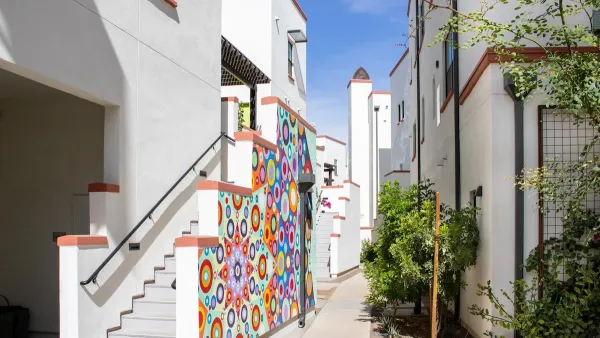Walkable Communities founder Dan Burden believes walkable communities contribute to greater happiness -- and that Silicon Valley has a thing or two to learn from Denmark.
"One measure of quality of life is the level of access we have to the things we value most - jobs, safe streets, affordable transportation and housing, and quality health care, schools and civic spaces such as parks and other gathering places. The ability to walk to many of these places from our homes or places ofemployment generally raises that quality-of-life index. When researchers look for places where people are happiest, it's often in communities where they can live near where they work, walk their children to school and shop at stores within walking or biking distance.
It's probably no coincidence that more than 20 years ago, Denmark set a vision to become one of the best places to walk anywhere. It took a long time to get there, but the Danes apparently are very happy with their results.
Silicon Valley can follow this example. It can leverage its standard of living to increase its walkability and improve its quality of life.
In Silicon Valley communities, most people don't live near where they work. In fact, many of the cutting-edge thinkers and innovators of the region have the worst commute times in the country.
Studies also indicate people are least happy when in their cars, largely because they cannot predict what will slow them down, or when. Thus the long commutes of Silicon Valley have gotten more and more costly, not only in terms of money and time, but also happiness.
Unfortunately, over the past several decades, we've designed our communities to move automobiles, not people. Too much is tied to the auto and is out of walking and bicycling range for residents. The happiest places in the world were designed to accommodate and support people, not their cars."
FULL STORY: Toward walkability - and happiness

National Parks Layoffs Will Cause Communities to Lose Billions
Thousands of essential park workers were laid off this week, just before the busy spring break season.

Retro-silient?: America’s First “Eco-burb,” The Woodlands Turns 50
A master-planned community north of Houston offers lessons on green infrastructure and resilient design, but falls short of its founder’s lofty affordability and walkability goals.

Delivering for America Plan Will Downgrade Mail Service in at Least 49.5 Percent of Zip Codes
Republican and Democrat lawmakers criticize the plan for its disproportionate negative impact on rural communities.

Test News Post 1
This is a summary

Test News Headline 46
Test for the image on the front page.

Balancing Bombs and Butterflies: How the National Guard Protects a Rare Species
The National Guard at Fort Indiantown Gap uses GIS technology and land management strategies to balance military training with conservation efforts, ensuring the survival of the rare eastern regal fritillary butterfly.
Urban Design for Planners 1: Software Tools
This six-course series explores essential urban design concepts using open source software and equips planners with the tools they need to participate fully in the urban design process.
Planning for Universal Design
Learn the tools for implementing Universal Design in planning regulations.
EMC Planning Group, Inc.
Planetizen
Planetizen
Mpact (formerly Rail~Volution)
Great Falls Development Authority, Inc.
HUDs Office of Policy Development and Research
NYU Wagner Graduate School of Public Service




























